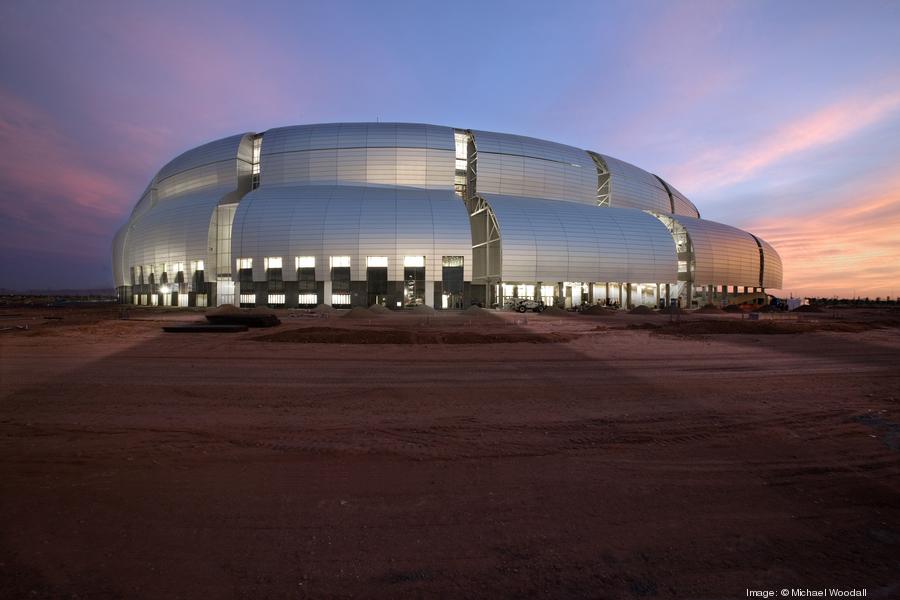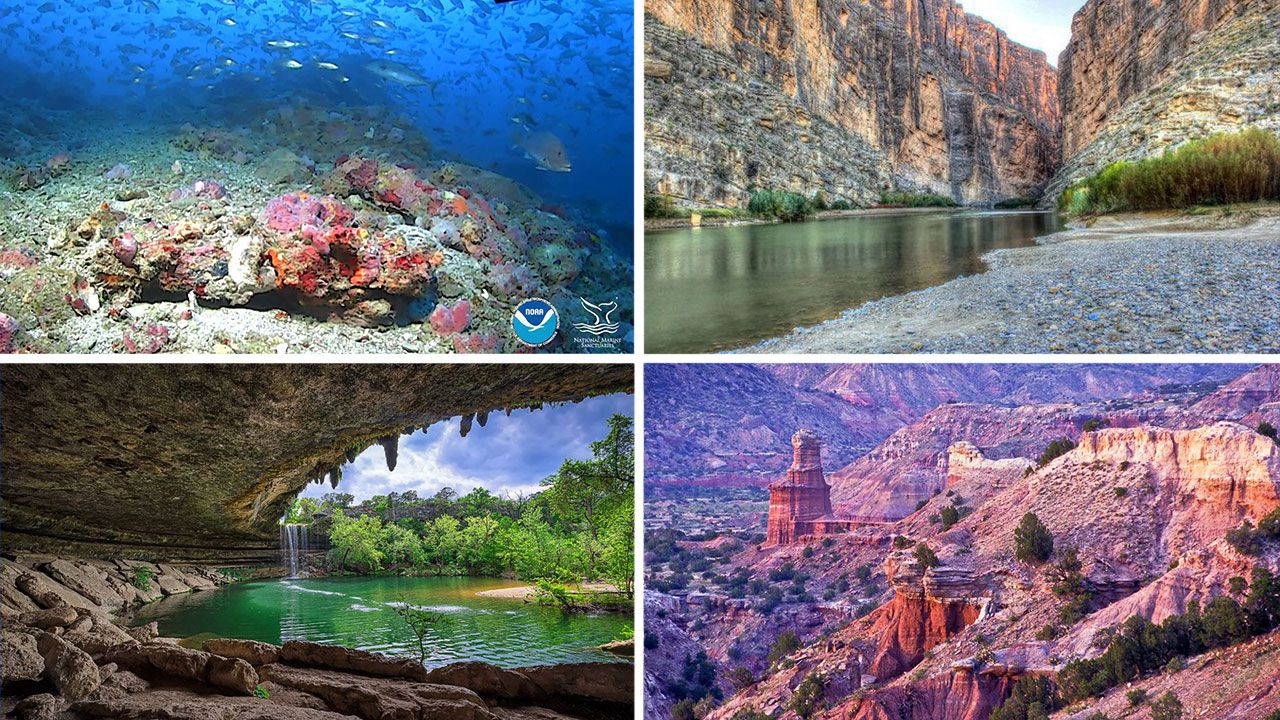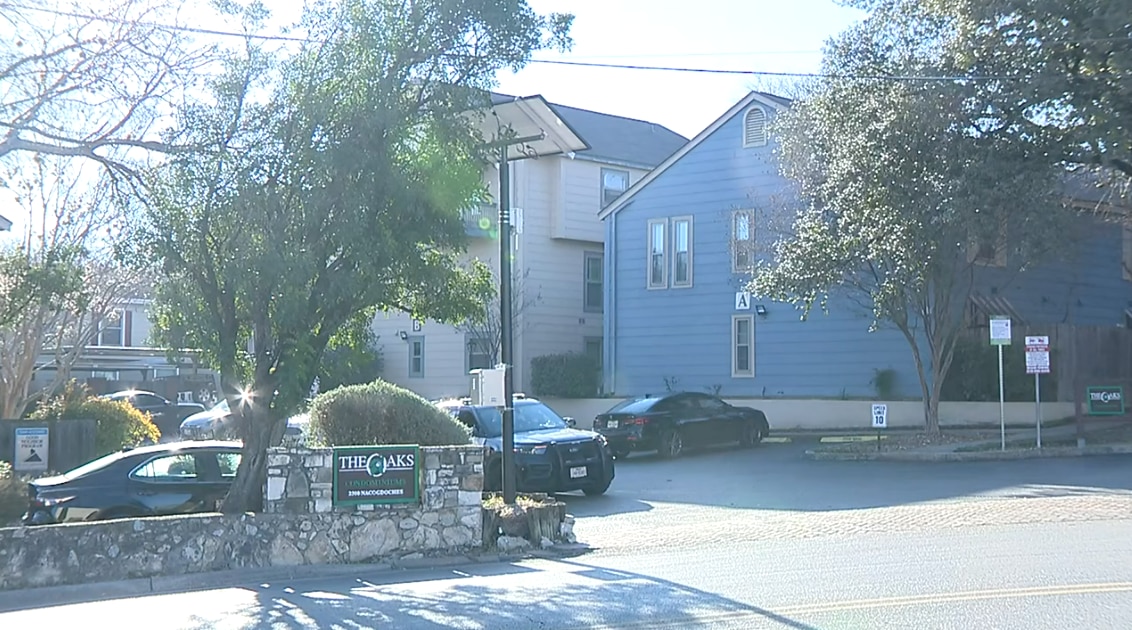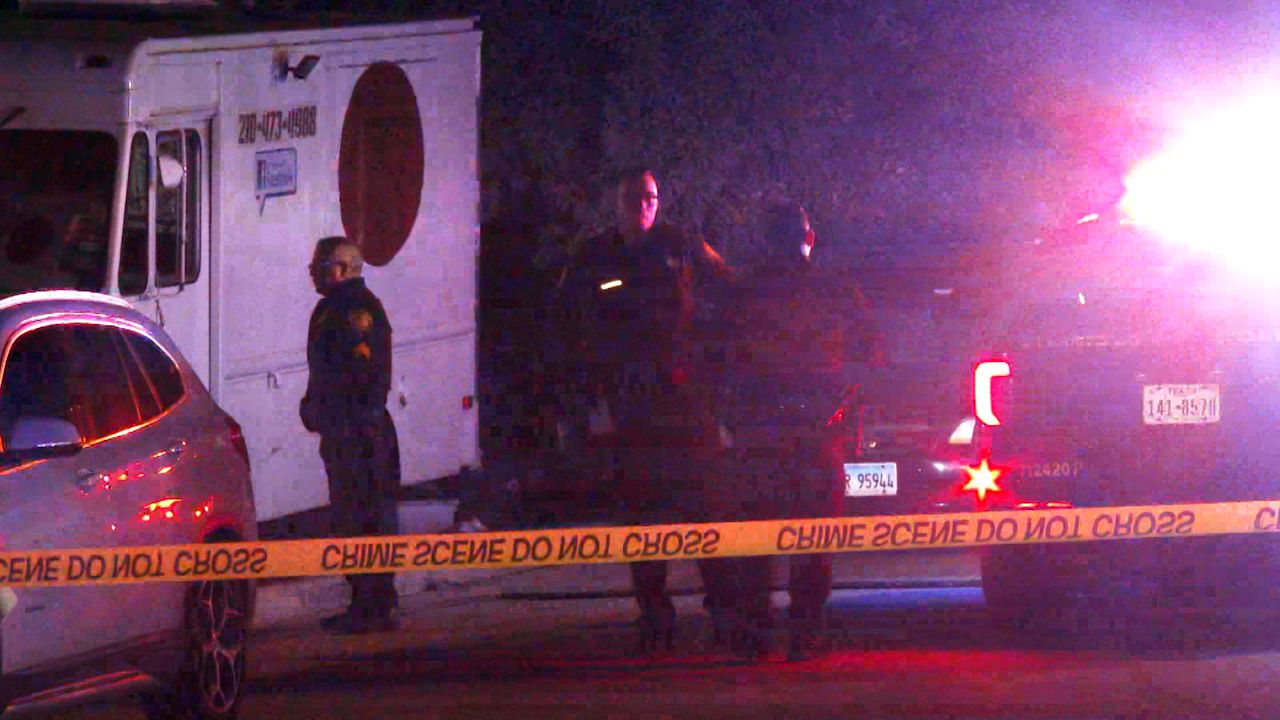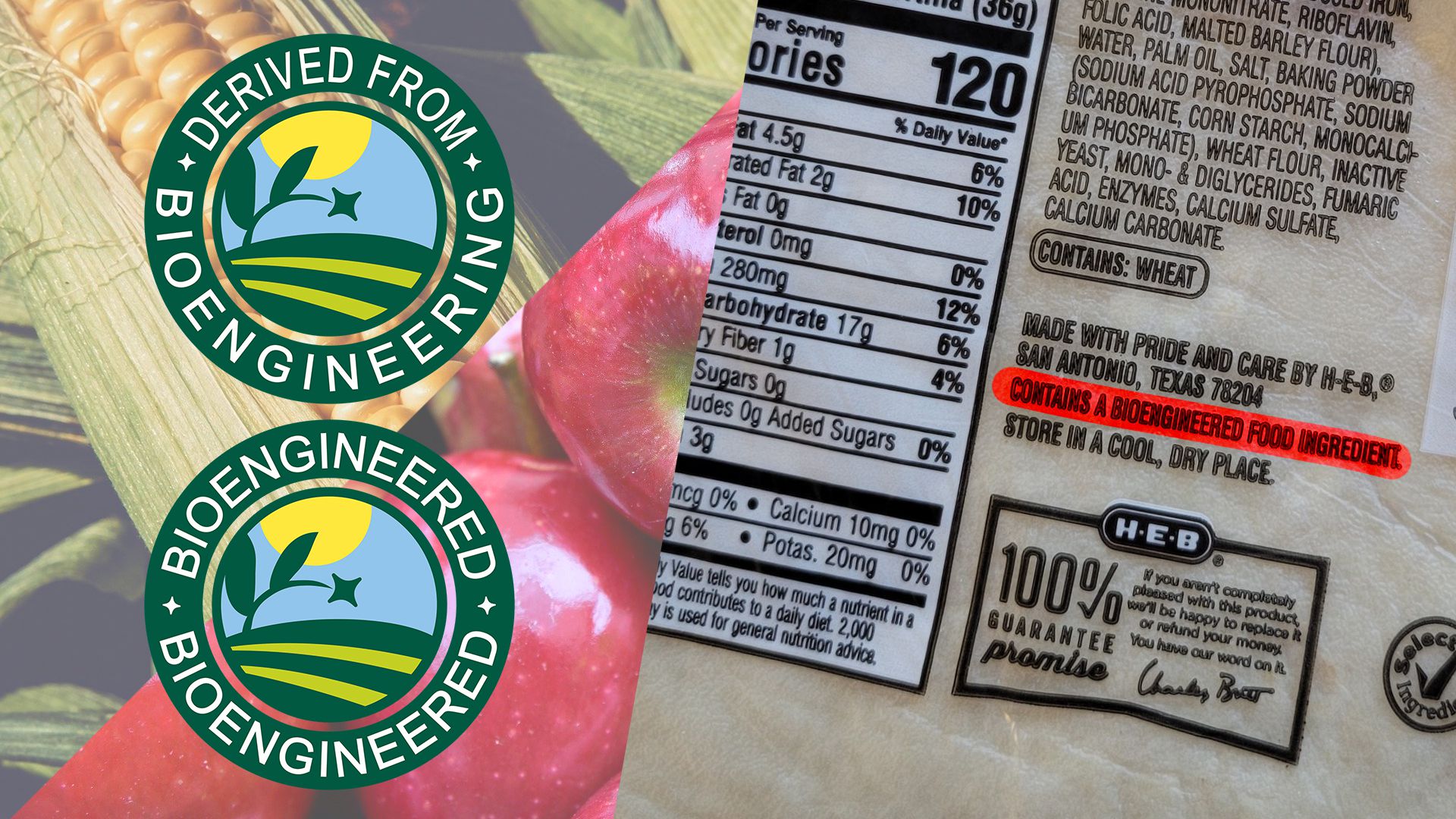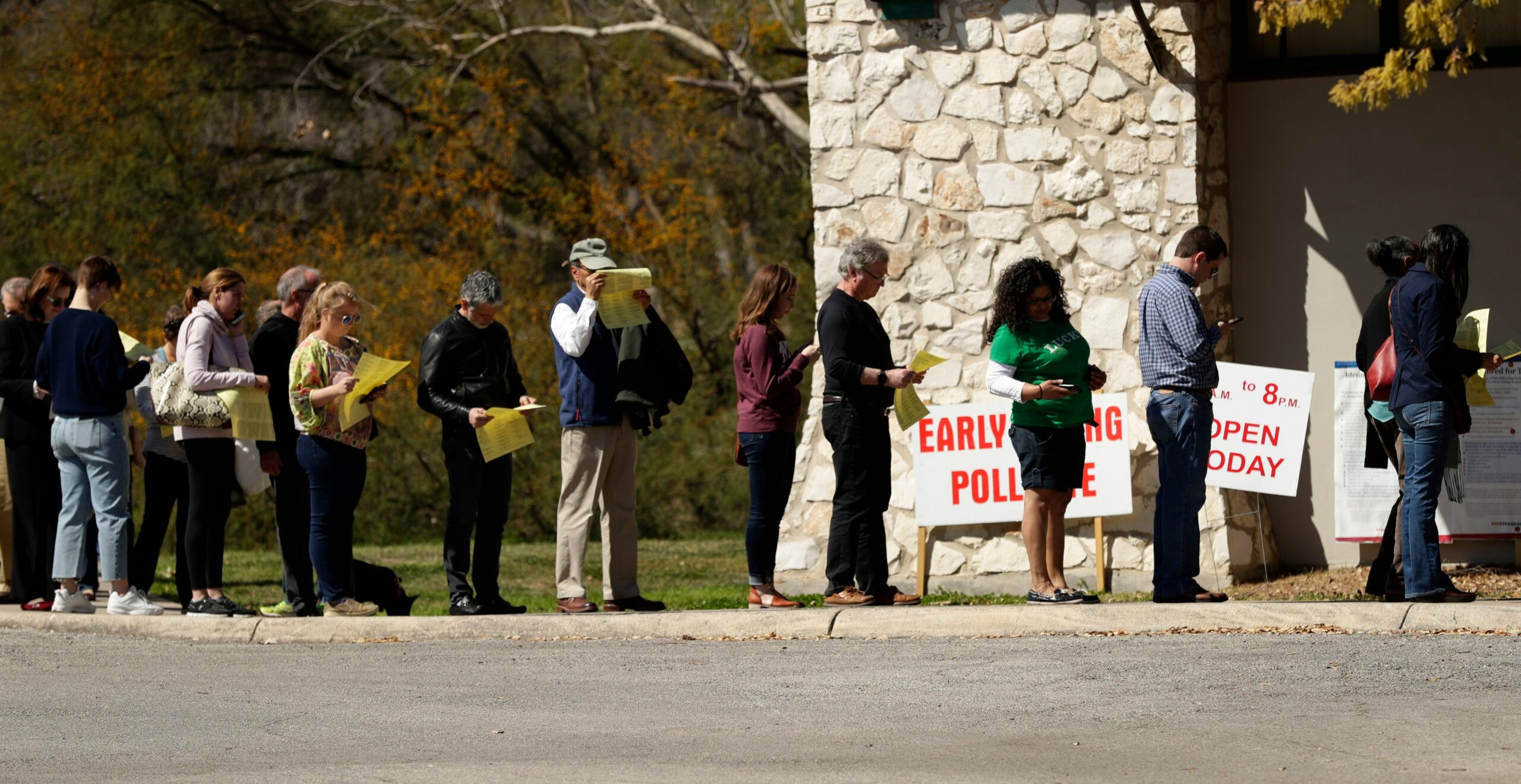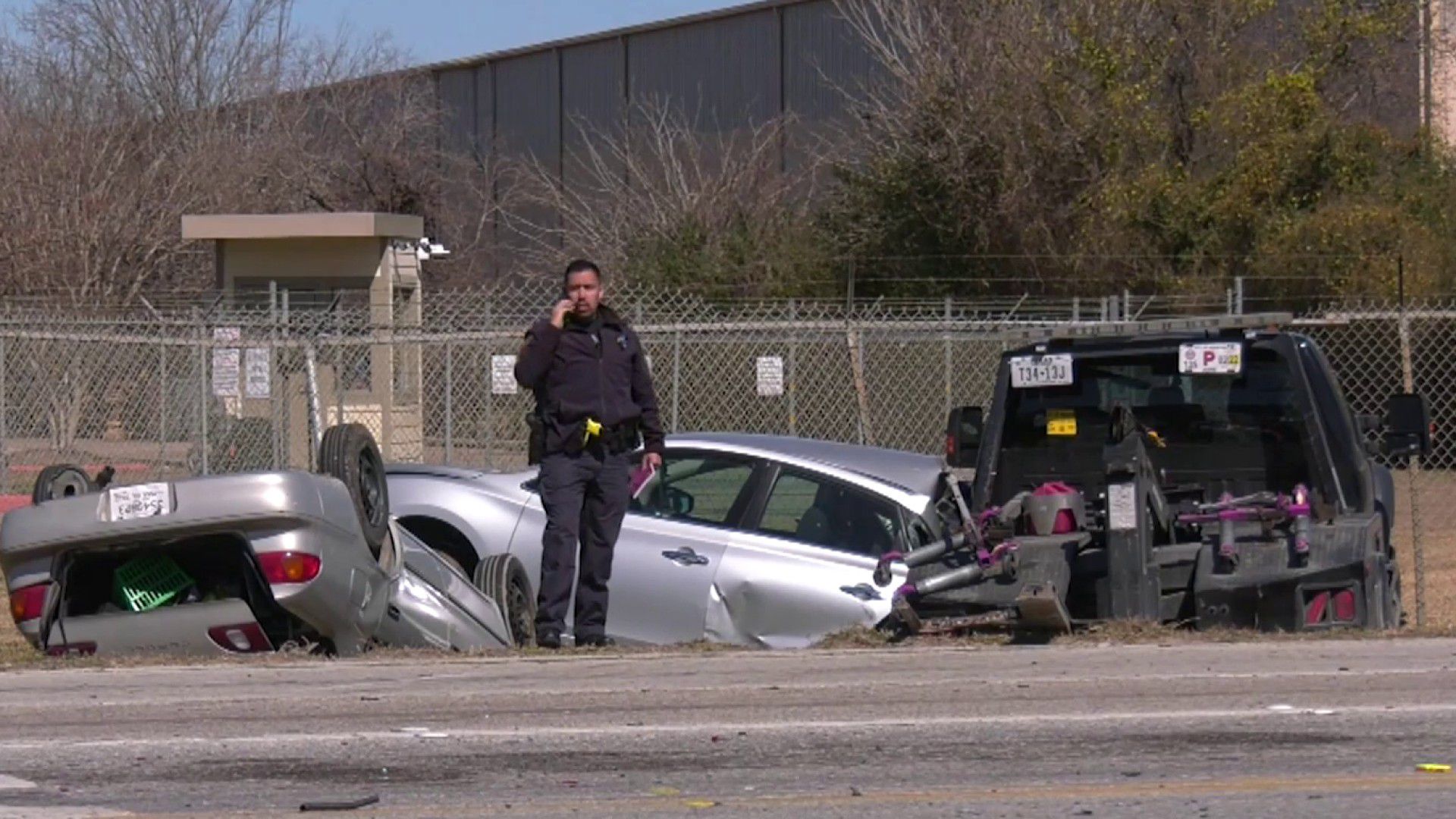Initial regulations under the Higher Education Act marked the first time that the federal government considered graduates’ earnings relative to their student debt as an accountability metric.
Category: San Antonio News
This category is for general business news stories local to San Antonio.
Texas destinations that can feel like international getaways
For this midmonth edition of the Things To Do newsletter, I wanted to focus on vacations — but with a twist.
I was scrolling through Pinterest looking at destinations of places I’d like to go at some point and then thought about how incredibly lucky we are to live in one of the most diverse states in the U.S.
We have waterfalls, deserts, mountains, canyons — many things that people don’t think of when they think of Texas. Maybe that’s why people keep moving here.
Did you know the second largest canyon in the entire country is in Texas? Palo Duro Canyon is known as the “Texas Grand Canyon” and it looks amazing from the photos I’ve seen.
This list has been curated specifically from places I know about that seem like they could be a foreign destination. If you know of a really cool location (of which I am sure there are tons) feel free to email me and maybe I can make another list down the road. Bonus points for photos if you’ve been there!
Here are some Texas vacations that can feel like international getaways:
Balmorhea Pool – The pool is located inside Balmorhea State Park in Toyahvale. The Texas Parks and Wildlife Department website says the pool is one of the largest spring-fed swimming pools in the world. You can swim, scuba, dive or just chill in the water. There are entrance fees of $7 per adult. Children 12 and younger are free.
Big Bend National Park – If you head to far West Texas you’ll find Big Bend National Park. Santa Elena Canyon is one of the most picturesque locations within the park and some of the canyon walls reach 1,500 feet high. Entry fees to the park vary but you can drive in for as little as $30 per vehicle. There are campgrounds if you feel like overnighting it, too.
Caddo Lake State Park – This park houses the 25,000-acre Caddo Lake, which borders Texas and Louisiana. It’s rife with things to do like fishing, paddling, hiking and boating and there are alligators throughout. Entrance fees are only $4 a day for adults. There’s history in these trees — TPWD states that people have lived in the area for 12,000 years.
Flower Garden Banks – A coral reef off the Texas coast? It’s true. A mere 100 miles off of Galveston there’s a 56-square-mile marine sanctuary known as Flower Garden Banks. Whale sharks, the world’s largest fish, have been spotted in the Flower Garden Banks. Obviously, the only way to get there is by boat but there are several dive and fishing charter operators who make the trip.
Gorman Falls – Gorman Falls is located in Colorado Bend State Park. Visitors note that the trail leading to the falls is rocky but the trek is worth the effort. Cooling off in the falls isn’t allowed but swimming and fishing are both allowed in Spicewood Springs, also located within the park. Entrance fees are $5 per day for adults.
Guadalupe Peak – Make sure you’ve got your hiking boots on for this one because the hike to the top of Texas is an 8.5 mile round trip with a 3,000-foot elevation. Guadalupe Peak is located in Culberson County and it’s the highest natural point in Texas at 8,751 feet above sea level. Entrance fees are required for Guadalupe Mountains National Park where the trail to reach the peak is located.
Hamilton Pool – This stunning swimming hole in Travis County might not be a swimming hole anymore. Swimming is actually not allowed for the foreseeable future due to falling rocks but Hamilton Pool is still an incredible sight for visitors looking to marvel at the waterfall. Reservation fees are required for entry.
Hell’s Gate at Possum Kingdom Lake – Hell’s Gate is immediately recognizable by the two massive cliffs that face each other, just before entry to a cove on the south end of Possum Kingdom Lake, west of Fort Worth. It’s a popular hangout for boaters and thrill-seekers who have been photographed diving from a 90-foot-high platform off Hell’s Gate at the Red Bull Cliff Diving World Series.
Jacob’s Well – Spring-fed Jacob’s Well is a swimming spot in the Texas Hill Country. Reservations are required for swimming. Jacob’s Well releases thousands of gallons of water every day from the Trinity Aquifer which comes from an extensive underground cave system. The deepest part of the cavern system is 140 feet deep and the main cavern length is 4,341 feet in length.
Japanese Tea Gardens – The Japanese Tea Garden in San Antonio is one of the most beautiful places in the city and admission is free. The garden went into a state of disrepair in the 1960s but received new life in 1984 when San Antonio Mayor Henry Cisneros and former Mayor Lila Cockrell restored the name to the Japanese Tea Garden. The garden has evolved since then. My fellow KSAT journalist RJ Marquez did a really cool write-up on the garden’s history.
Padre Island National Seashore – This park protects 66 miles of Texas coastline and it’s actually the longest stretch of undeveloped barrier island in the world. It’s got a history of Spanish shipwrecks and it’s home to 380 species of birds and endangered species like the Kemp’s ridley sea turtle. Pretty cool!
Palo Duro Canyon – Sometimes referred to as the “Texas Grand Canyon,” Palo Duro Canyon has a rich history and is the second-largest canyon in the U.S. Palo Duro Canyon State Park is located in the heart of the panhandle. Camping, glamping and cabins are all options for overnight stays if you want to sleep in the same areas that people have inhabited for the last 12,000 years. The Clovis and Folsom peoples were the first humans known to live in the canyon and they hunted large herds of mammoth and giant bison, according to TPWD officials.
Pedernales Falls State Park – You can camp, hike, mountain bike, picnic, geocache, bird watch and ride horses at Pedernales Falls State Park near Johnson City. The 5,200-acre park opened in 1971 after being transferred to the state of Texas from private owners. The area used to be known as Circle Bar Ranch. Entrance fees are $6 a day for adults.
Sam Houston National Forest – Sam Houston National Forest is one of four national forests in Texas and it’s located just north of Houston. The forest has a deep history with evidence of occupation as early as 7,000 years ago. The U.S. Forest Service asks that if you discover any artifacts during your visit to the national forest to leave them in place and contact the Sam Houston Ranger District Office.
South Padre Island – This resort town is located at the southern tip of Texas but it’s known for having some of the nicest beaches in the state. There are tons of things to do from fishing to birding to shopping but with so many of our state’s beaches boasting brown water, it felt necessary to include it in the list.
Terlingua – Texas is full of history and haunted locations, but did you know there’s an entire ghost town you can tour in Terlingua? It’s an abandoned mining town that went belly-up, causing the residents to pack up and leave their little town behind. If you’re in the mood to visit the decaying buildings and mine shafts and see a piece of Texas history, there are several spots available for glamping.
Utopia Tree Houses – I watched the “Swiss Family Robinson” 90 times as a kid and loved that movie, so when my buddy Sarah Acosta found these treehouses in the Hill Country, I was smitten. I have since covered many unique Texas treehouses you can rent for the weekend. But if you’ve ever dreamed of living in the trees (even for a weekend) you can find some pretty impressive treetop digs in Utopia.
Thank you for taking this trip around Texas with me. I know it’s a break from the traditional format but sometimes change is good, right? I’ll have the next edition of the Things To Do newsletter coming in a couple of weeks and a Fiesta guide ready for you in mid-March.
Don’t forget to send me those exotic Texas destination ideas at mpatton@ksat.com.
Mary Claire Patton, KSAT Digital Journalist
Here’s how to get past some dating dealbreakers on Valentine’s Day
2021 was rough when it came to looking for love. The pandemic has changed the dating world a lot.
More and more first dates are by video chat and multiple dating apps have reported that singles are more intentional when swiping right.
Studies also show that more people spent time reflecting on exactly what they’re looking for in a significant other.
Dealbreakers come in all shapes and sizes, but which ones are truly worth it? Here is how to get past some dating dealbreakers.
Too tall. Too short. Too much. Not enough. Everybody’s dating deal breakers are different.
A new survey reports that 86% of singles say being unvaccinated is a dealbreaker, 35% say a long-distance relationship is another, and more than 55% say being late to a planned date, is a turn off.
“There is increased pressure in the dating scene,” M. Clark Canine MA, LMHC, NCC, psychotherapist, speaker and author said.
Relationship experts say it’s unrealistic to expect your potential mate to go above and beyond for you from the start.
Don’t expect them to read your mind. Be open and communicate truthfully. Don’t make assumptions about who they are. Stereotyping is the quickest way to get them to lose interest. And the best thing you can do? Pay close attention to actions and don’t rush into anything.
“There’s a tendency to want to be too serious too fast,” Canine said.
Choose your dealbreakers wisely because you never know who’s out there waiting for you.
According to a match.com’s study, 76% of singles said that they desire a partner who wants marriage, and this is a 56% increase from 2019.
Eighty one percent of men say that sex is less important in a relationship now than before the pandemic.
Authorities release ID, cause of death of remodeling contractor allegedly killed by coworker
The Bexar County Medical Examiner’s Office has released the name and cause of death of a remodeling subcontractor found dead at a job site last week.
Miguel Miranda-Hernandez, 50, died of a gunshot wound to the head, authorities said.
His body was found just before 7:20 a.m. Friday when his boss when to check on him and another worker at a job site at an apartment complex in the 2300 block of Nacogdoches Road, near Loop 410, police said.
An SAPD sergeant at the scene said the two workers had been staying and working at the apartment complex.
At some point, they had an altercation and one of them killed the other, police said.
The main contractor went to the complex when things “seemed kind of fishy,” and that’s when he discovered the dead man, the sergeant said.
The coworker was detained at an area store. He had a weapon on him, but police did not describe the weapon.
At the time it was unclear if the incident happened in self-defense.
Read also:
SAPD: Investigation underway after man is shot on West SideSeries of standoffs in Dilley ends with man hospitalized after shooting, police say
Man in critical condition after being shot in far NW Side parking lot, police say
A man in his 20s is in critical condition after being shot on the city’s far Northwest Side early Monday morning, San Antonio police said.
The incident occurred just after midnight, near Loop 1604 and White Fawn Drive.
According to police, the man was shot in the parking lot across the street from the Hills and Dales Ice House. The wounded man was taken by EMS to University Hospital, where he is listed in critical condition.
At this time, a motive for the shooting is not currently known. The suspect fled on foot and has not been found.
The San Antonio Police Department, the San Antonio Fire Department and EMS all answered the call.
The investigation is ongoing, police said.
Arson investigators looking into cause of fire that destroyed 2 homes on West Side
San Antonio arson investigators are taking a close look at a fire that destroyed two homes on the city’s West Side early Monday morning.
What was supposed to be a vacant house went up in flames and then spread to a home next door.
The fire was called in around 2:45 a.m. on Monterey Street near South General McMullen.
Firefighters said when they arrived, they found a total of three structures on fire. The house where the fire originated had been occupied by the homeless, fire officials said.
The fire spread from the vacant house to a neighbor’s house and a shed also caught fire. Two people were displaced as a result of the flames.
Firefighters said they had reports of a homeless man still inside, but they searched and did not find anyone. The residents of the main house got out safely and are now staying with neighbors, fire officials said.
A neighbor said it appeared that someone set fire to the home, and she believes she caught the act on surveillance video.
An arson investigation team has since been called out to determine the exact cause.
This is a developing story. Stay with KSAT12 both online and on-air for more information.
What is a bioengineered food and why do some food packages now have that label?
You may have noticed a new label on some foods from the grocery store with a word that some people are finding disconcerting or at the least confusing — “bioengineered.”
So what is a bioengineered food ingredient and why are those labels suddenly showing up on food packaging?
In 2016, Congress passed the National Bioengineered Food Disclosure Standard requiring food manufacturers, importers, and certain retailers to disclose foods that have been bioengineered, and Jan. 1, 2022, was the date for mandatory compliance.
You may be more familiar with the terms “genetically modified,” or “GMO.” The new standard replaces those terms with “bioengineered,” or “BE.”
Are bioengineered foods safe?
A National Academies of Sciences, Engineering, and Medicine committee examined in-depth the potential negative effects and benefits of genetically engineered crops.
The committee found no substantiated evidence that foods from bioengineered crops were any less safe than foods from non-bioengineered crops. The FDA also says that bioengineered foods are safe to eat and pose no risk to your health.
Bioengineered foods don’t contain any more antibiotics or steroids than non-bioengineered versions of foods. The crops aren’t changed in any ways that would increase the risk for cancer, and they’re no more likely to cause allergies than non-bioengineered foods, the FDA says.
But that’s only the tip of the iceberg when it comes to the debate on bioengineered foods. There are also questions about how it affects the farming industry, soil, and the evolution of weeds and insect populations.
The National Academies of Sciences commission said that “sweeping statements about GE crops are problematic because issues related to them are multidimensional.”
In other words — it’s complicated.
What is bioengineered food?
The National Bioengineered Food Disclosure Standard defines bioengineered foods as “those that contain detectable genetic material that has been modified through certain lab techniques and cannot be created through conventional breeding or found in nature.”
A bioengineered food or ingredient must contain some of the newly introduced DNA.
The FDA says humans have been using selective breeding and cross-breeding of plants and animals for more desirable traits for thousands of years.
Since the 1980s, biologists have used genetic engineering in plants to express desirable traits, including longer shelf-life, higher vitamin content or disease resistance.
Most of those crop varieties are NOT in commercial production.
It wasn’t until the mid-1990s that the first GMO or bioengineered vegetables became available for consumers.
Fact: Human insulin as a treatment for diabetes was the first GMO product approved by the FDA in 1982.
Agricultural Biotechnology_GMO Timeline by Julie Moreno on Scribd
Which foods are bioengineered?
There are currently more than a dozen crops and foods that are legally bioengineered.
The U.S. Department of Agriculture maintains a list of any BE crops or foods that are currently in legal production throughout the world. The list is updated once a year, and new BE products are continuing to be developed, so the list may not include every product and the ways that it has been bioengineered.
List of bioengineered foods as of February 2022:
Alfalfa (pdf)Apple (ArcticTM varieties) (pdf)Canola (pdf)Corn (pdf)Cotton (pdf)Eggplant (BARI Bt Begun varieties) (pdf)Papaya (ringspot virus-resistant varieties) (pdf)Pineapple (pink flesh varieties) (pdf)Potato (pdf)Salmon (AquAdvantage®) (pdf)Soybean (pdf)Squash (summer) (pdf)Sugarbeet (pdf)
Why are foods bioengineered?
Plants are bioengineered to express desirable traits and make them easier to grow or sell.
Many of the plants on the list have genes that make them resistant to insects or diseases.
The United Nations has said that genetically modified crops could possibly relieve global food shortages.
If you’ve come across one of the new bioengineered food labels, there’s a good chance it was a product that contained soybeans, canola, corn or potatoes.
So, take potatoes for example. You’ve probably heard of the great Irish potato famine.
Potatoes were the main source of food for most people in Ireland in the early to mid-1800s, but especially for tenant farmers and poor people. It’s estimated that 80% of their calories came from potatoes. From 1845 to 1849, all of the potato crops were destroyed by a disease called late blight.
A disease called late blight destroyed the leaves and edible roots of the potato plants in successive years from 1845 to 1849. It’s estimated that about one million people died as a result of the famine.
The same disease destroyed more than half of the tomato crop in the eastern United States in 1946.
There is a national website that tracks late blight in the U.S. The website says the disease is still a major threat to food security worldwide, and it’s estimated that crop losses and the cost of control measures exceed 6.7 billion dollars a year.
Some potatoes have now been bioengineered to be protected against late blight in addition to insects. Some are also bioengineered to reduce black spots, bruising and sugars.
You can click on the list of foods above to see which genes were modified and which traits are affected.
Which products must be labeled as BE?
Food manufacturers, importers, and retailers who package and label food for retail or bulk food sales are required to follow the new standard, but restaurants do not.
Food manufacturers must include one of four labeling options:
The words “bioengineered food” for single-ingredient foods or “contains a bioengineered food ingredient” printed on the packaging.One of two logos approved by the USDA.An electronic or digital link (QR code) with the printed instructions to “scan here for more food information” or similar language and must include a phone number for more food information.A text message disclosure statement that says “Text [command word] to [number] for bioengineered food information.”
The new standard does not apply to foods that are primarily meat, catfish, poultry, dairy or eggs — meaning if one of those is listed as the first ingredient, then it’s not subject to the new labeling standard. It’s also not required in products whose first ingredient is broth or stock and whose second ingredient is meat, catfish, poultry, dairy or eggs.
It’s also not required in foods that are so highly processed that any modified genetic material is undetectable.
Opposition to BE foods and the Non-GMO Project
Most groups that oppose BE and GMO foods argue that there is a lack of proper regulation and a lack of unbiased scientific research on the long-term human and environmental health impacts.
Some of the bioengineered foods are designed to resist herbicides, resulting in more of the chemicals being used and therefore impacting ecosystems — plants, pollinators, soils and surrounding communities.
The Center for Food Safety, a group that advocated against the “harmful impacts of industrial agriculture,” has filed a lawsuit saying the final labeling regulations use confusing language or QR codes and leave the majority of GMO-derived foods unlabeled.
“These regulations are not about informing the public but rather designed to allow corporations to hide their use of genetically engineered ingredients from their customers,” said Andrew Kimbrell, executive director of the Center for Food Safety. “It is a regulatory scam, which we are seeking to rescind in federal court. In addition, we are urging our million CFS members and others to become citizen investigators and find and expose the companies that are using QR codes instead of on-package text or symbol labeling, thereby trying to keep us in the dark about what they have put in our food.”
You may be familiar with another common food label — the image of a butterfly on a leaf with the words “NON GMO Project Verified.”
The Non-GMO Project is a nonprofit organization aimed at building and protecting a non-GMO food supply.
Their mission is focused on the belief that consumers have a right to know what is in their food and to have access to non-GMO choices in addition to protecting traditional seed breeding and the supply of non-GMO seeds. They say the labels are a way to help consumers “vote with their dollars” when they shop.
The Alabama Cooperative Extension System says those Non-GMO labels are not regulated and are just a tool for marketing and says all of our food is genetically modified, while only a few (listed above) are bioengineered.
But the Non-GMO Project says it’s the BE labels that are the misleading ones, insisting they don’t go far enough and can confuse consumers.
“Bioengineered is supposed to mean GMO, but it uses a much more narrow definition than consumers expect from other certifications. Per the USDA’s definition, bioengineered foods must contain modified genetic material, which leaves out many products made with GMOs,” the group posted in a blog on its website.
The group argues that “nothing in nature exists in a vacuum.”
“Whether a GMO is created by combining genes from multiple species or by rearranging or silencing genes within a species, the fundamental premise remains the same — the flawed idea that genes can be reduced to isolated functions, without regard for the complex interplay of the entire genome,” said Non-GMO Project Executive Director Megan Westgate.
Want to learn more?
Here are some links to other resources about bioengineered and genetically modified foods:
U.S. Department of AgricultureU.S. Food & Drug AdministrationWorld Health OrganizationCenter for Science in the Public InterestNational Library of MedicineUConn GMO Resources
<!–[if lte IE 10]>
Please click here to upgrade to a newer browser.
<![endif]–>
Here’s how, where to vote early in Bexar County for the 2022 Texas primary election
In this midterm election year, Bexar County residents will vote on representatives on the local, state and national levels.
But it all starts with the primary election, and early voting begins on Monday.
From Monday, Feb. 14 through Friday, Feb. 25 (with the exception of Presidents Day on Feb. 21), voters can head to more than 30 polling places to cast their ballots during early voting. See the list and map of polling places, plus early voting hours below.
For those who do not make it to the polls during the early voting period, the primary election day is March 1.
Voters in Bexar County can cast a ballot at any polling place during early voting and on election day.
Some people may be eligible to vote by mail, but absentee/mail-in ballots must be postmarked or delivered by hand by 7 p.m. March 1 on election day.
The last day to apply for a ballot via mail is Feb. 18. For more information about voting by mail, click here.
Here’s what else you need to know about early voting in Bexar County.
When can I vote early in Bexar County?
Monday, Feb. 14-Friday, Feb. 18: 8 a.m.-6 p.m.Saturday, Feb. 19: 8 a.m.-8 p.m.Sunday, Feb. 20: Noon-6 p.m.Monday, Feb. 21: Closed due to Presidents DayTuesday, Feb. 22-Friday, Feb. 25: 8 a.m.-8 p.m.
Where can I vote early in Bexar County?
Note that these sites are subject to change.
Bexar County Elections Office: 1103 S. Frio StreetBexar County Justice Center (basement): 300 Dolorosa. Closes at 6 p.m. on weekdays, closed Saturday and SundayBrookhollow Library: 530 Heimer RoadCastle Hills City Hall (community room): 209 Lemonwood DriveClaude Black Center: 2805 East CommerceCody Library: 11441 Vance JacksonCortez Library: 2803 Hunter BoulevardEncino Park Library: 2515 East Evans RoadGreat Northwest Library: 9050 WellwoodGuerra Library: 7878 W. Military DriveJohn Igo Library: 13330 Kyle Seale ParkwayJohnston Library: 6307 Sun Valley DriveJulia Yates Semmes Library at Comanche Lookout Park: 5060 Judson RoadLas Palmas Library: 515 Castroville RoadLeon Valley Conference Center: 6421 Evers RoadLion’s Field: 2809 BroadwayMaury Maverick, Jr. Library: 8700 Mystic ParkMission Library: 3134 Roosevelt AvenueNew Covenant Baptist Church (fellowship hall): 1107 S East Loop 410Northside Activity Center: 7001 Culebra RoadNorthwest Vista College (Mountain Laurel Hall): 3535 N. Ellison DriveOld Converse City Hall: 407 S. Seguin RoadOur Lady Of The Lake University: 411 SW 24th St.Palo Alto College (Performing Arts Center): 1400 W. Villaret Blvd.Parman Library: 20735 Wilderness Oak St.Precinct 1 Office: 3505 S. Pleasanton RoadSchaefer Library: 6322 US Hwy 87 E.Shavano Park City Hall: 900 Saddletree CourtSomerset City Hall: 7360 E. 6th StreetSouthside Lions: 3100 Hiawatha StreetTexas A&M San Antonio (Mays Center): 1 University WayTobin Library: 4134 Harry WurzbachUniversal City Library: 100 Northview DriveUTSA: 1 UTSA CircleWonderland Mall Of The Americas: 4522 Fredericksburg RoadWoodlawn Pointe Center: 702 Donaldson Avenue
How do I know if I’m eligible to vote?
To check if you are eligible to vote, click here. The last day to register to vote in the March 1 primary was Jan. 31.
If you missed the deadline, however, there are still other important elections this spring.
The local/county elections and state constitutional amendment election and the primary runoff election take place in May, and the deadlines to register to vote in those elections aren’t until April. Click here for other key election dates.
In the primary election, local voters will decide on the races for Texas governor, Bexar County judge, Bexar County district attorney, Texas Attorney General and commissioners for Precincts 3 and 4. For a full list of races to watch, click here.
What do I need to bring to the polling place?
Acceptable forms of ID include a Texas driver license, a Texas Election Identification Certificate issued by DPS, a Texas personal identification card issued by DPS, a Texas handgun license issued by DPS, a U.S. military ID card with a photo, a U.S. citizenship certificate containing with a photo, or a U.S. passport.
Your ID may be expired no more than four years unless you’re 70-years-old, and then the acceptable form of ID can be expired for any length of time.
If a voter has one of the acceptable forms of IDs but forgets to bring it to the polling place, the voter can vote provisionally. That voter will then have six days to present a photo ID to the county voter registrar or fill out a natural disaster affidavit, or the vote will not count.
If you do not have one of the acceptable forms of ID and cannot reasonably obtain one, you can fill out a Reasonable Impediment Declaration at your place of voting and must show one of the following supporting forms of ID:
copy or original of a government document that shows the voter’s name and an address, including the voter registration certificate;copy of or original current utility bill;copy of or original bank statement;copy of or original government check;copy of or original paycheck; orcopy of or original of (a) a certified domestic (from a U.S. state or territory) birth certificate or (b) a document confirming birth admissible in a court of law which establishes the voter’s identity (which may include a foreign birth document).
Voters with a disability may apply with the county voter registrar for a permanent exemption to the photo ID requirement.
Read also:
Abbott, O’Rourke focus on business, state power grid during simultaneous events in San Antonio🗳 FULL BALLOT: 2022 Democratic Party March Primary ballot for Bexar County🗳 FULL BALLOT: 2022 Republican Party March Primary ballot for Bexar County
San Antonio program pushes cultural representation in dental care across Texas
Many counties in South Texas desperately need dentists, specifically dentists who represent the patients they serve.
The Hispanic Center for Excellence at UT Health San Antonio is using federal funding to fill that need and it’s helping both students and patients.
As a young girl growing up in Brownsville, Texas, Jessica De la Fuente didn’t have access to routine dental care.
“A lot of the places I went to were community health centers in Brownsville or my family, we were going to Mexico, crossing the border to get dental help,” De La Fuente said.
When she finally was able to see a dentist regularly, her dream began.
“My main goal ever since starting my journey in getting to dental school and becoming a dentist was always to return back to my hometown community and give back to the place where I was born and raised,” De La Fuente said.
Her background, ability and determination made her a prime candidate for UT Health San Antonio’s School of Dentistry.
A federal Health Resources and Services Administration grant allows the school to recruit students from underserved areas who ultimately will go back and help serve those communities.
“We recruit them, we mentor them, we guide them so they’re successful applicants. Once they’re in dental school we want to be able to provide the resources that they need to be successful and to graduate,” said Dr. Juanita Lozano-Pineda, the associate dean for External Affairs at the UT Health San Antonio School of Dentistry, and director of its Hispanic Center of Excellence.
Lozano-Pineda’s personal experience when she was younger is something that pushes her to diversify the world of dentistry.
“Back in the day, I was discouraged from going to dental school by a dentist that I shadowed. And I felt that as a first-generation college attendee, what you need is someone to support your dream rather than trying to stop you,” she said.
She said the grant provides things like tutoring and access to important summer programs.
Those programs have led to an increase in underrepresented minority applicants and enrollees, who now comprise more than 30% of the dental school’s students.
Furthermore, the school’s graduates now account for 33% of practicing dentists in underserved counties of South Texas.
“Patients, they feel more comfortable when they see someone from their background who speaks their native language, their culture. I’ve seen patients’ faces just light up with happiness when they see, ‘Oh you speak Spanish’. It’s kind of like a sigh of relief, ‘You’re going to listen to me. You’re going to understand what I’m saying,’” De La Fuente said.
De La Fuente will soon graduate and return home to work, bringing with her the power to inspire future young dentists to do the same.
“Just this past week I was in Laredo doing my pediatric rotation. A little girl asked there, ‘did you already get through college?’ I said, ‘Yeah I’m in dental school!’ She was asking me all these questions because it’s not often she sees someone like her in the dental profession,” she said.
She hopes anyone interested in becoming a dentist will contact UT Health San Antonio’s School of Dentistry for information on the recruiting programs.
Infant killed in multi-vehicle crash involving tow truck near Houston, deputies say
An infant is dead after a multi-vehicle crash involving a tow truck in northwest Harris County, according to deputies.
KSAT’s sister station, KPRC reports the crash happened around 10 a.m. Sunday in the 6600 block of Cunningham Road near West Little York Road.
Deputies said the tow truck, which was hauling a vehicle at the time, was heading eastbound at a high rate of speed when it struck a stopped Nissan.
The truck then dragged the Nissan into a ditch and flipped it, KPRC reports. Both a mother and her 4 to 7-month-old son were inside of the Nissan at the time of the wreck.
Authorities said the vehicle that was attached to the tow truck also rolled upside down into a ditch.
The infant was taken to an area hospital where he later died from his injuries, KPRC reports. The infant’s mother was also hospitalized but her condition is unknown.
Deputies arrested the driver of the tow truck at the scene on manslaughter charges for the infant’s death.
We’ll bring more updates to this story as they become available.
More on KSAT:
11 displaced after large apartment building fire on Northeast Side, SAFD says

